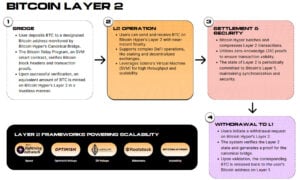Pyth Network Integrates Kalshi to Stream Regulated Event Data Onchain
TLDR:
- Pyth Network’s partnership with Kalshi enables the first large-scale onchain delivery of regulated event data.
- Kalshi’s global expansion follows a $300 million raise, reaching 140 countries with a $5 billion valuation.
- Developers gain access to real-time data from markets like elections, sports, and interest rates via Pyth feeds.
- The collaboration builds a foundation for event-driven DeFi products backed by institutional-grade data.
A new chapter in crypto data infrastructure is unfolding. Pyth Network has joined forces with Kalshi, the U.S.-regulated event exchange, to stream live prediction market data across more than 100 blockchains.
The move links traditional event trading with decentralized finance, giving developers access to regulated, real-time event outcomes. The partnership opens the door for builders to design new types of products fueled by market-based probabilities.
According to a blog post, the collaboration marks the first large-scale flow of regulated event data onchain.
Kalshi’s Regulated Event Data Expands Across Crypto
Kalshi, recently valued at $5 billion after a $300 million raise, has extended its reach to 140 countries.
The firm operates as a federally regulated event-exchange under the U.S. Commodity Futures Trading Commission. By working with Pyth, Kalshi’s live market prices are now accessible to crypto developers and DeFi protocols worldwide.
This integration enables real-time updates for markets such as the New York City mayoral race, the 2025 rate cut count, and global sports outcomes. It provides an entirely new layer of financial data that moves beyond asset prices.
Developers can now rely on Kalshi’s verified data feeds when building decentralized applications tied to political, economic, and cultural events.
Mike Cahill, CEO of Douro Labs and contributor to Pyth, stated that prediction markets have matured since the 2024 U.S. election, transforming how future expectations translate into onchain value. He said the partnership reflects Pyth’s broader vision to offer one of the world’s most complete financial data ecosystems.
By distributing event-driven information at scale, the Pyth-Kalshi collaboration allows crypto protocols to tap into probabilities once locked inside centralized exchanges. It also reinforces the growing link between institutional finance and decentralized networks.
How Pyth’s Onchain Feeds Bring Real-Time Crypto Market Innovation
Pyth has already built a strong position as a key market data oracle. Its oracles feed prices for cryptocurrencies, equities, and foreign exchange across more than 100 blockchains. The addition of Kalshi’s event-based data adds a new dimension, allowing predictions and probabilities to inform decentralized financial systems.
The integration follows Pyth’s rollout of Pyth Pro, its institutional-grade data service. That platform provides high-fidelity market data to traders and protocols across multiple asset classes.
Together, these efforts strengthen Pyth’s standing as a bridge between traditional finance and crypto infrastructure.
Developers can now use regulated prediction data to create synthetic assets, risk models, and event-tied yield tools. For example, markets predicting sports winners or election results can feed directly into DeFi applications, enabling programmable responses to real-world events.
Kalshi’s presence brings oversight and credibility, giving the event data legitimacy within both institutional and retail environments. The partnership also demonstrates the growing appetite for regulated data in crypto systems that prioritize transparency and accessibility.
The post Pyth Network Integrates Kalshi to Stream Regulated Event Data Onchain appeared first on Blockonomi.
You May Also Like

Mastercard Goes All Into Web3 Via Acquisition of Zerohash for Nearly $2B

Bitcoin Hyper Coin Review 2025 — Is it Safe to Invest in? Everything You Need to Know
